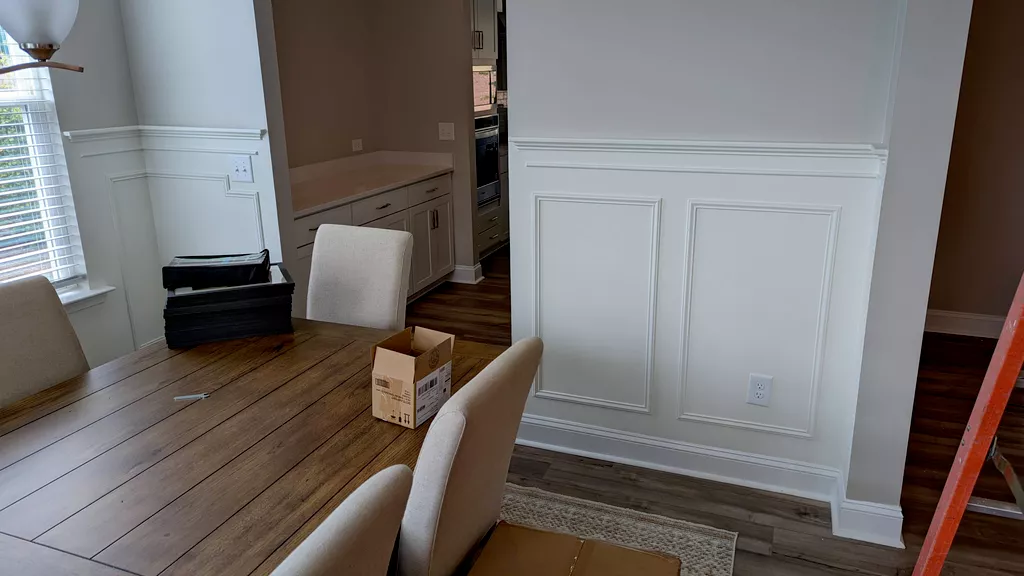Choosing Trim
**Choosing the Right Trim for Your Renovation: A Guide to Perfecting Your Space**
When embarking on a home renovation, the details matter—especially when it comes to trim. Often overlooked, trim plays a crucial role in defining a room’s character, enhancing architectural features, and creating a cohesive look. Here’s a comprehensive guide to help you select the right trim for your renovation project, ensuring every inch of your home feels thoughtfully designed and beautifully finished.
**1. Understand the Different Types of Trim**
Before making a decision, it’s important to familiarize yourself with the various types of trim available. Here are some common options:
– **Baseboards:** These are installed at the bottom of walls where they meet the floor. They can vary in height and profile, from simple and understated to elaborate and ornate.
– **Crown Molding:** Positioned where the walls meet the ceiling, crown molding adds elegance and can make ceilings appear higher. Styles range from traditional to contemporary.
– **Wainscoting:** This paneling covers the lower portion of walls and can add texture and depth. It’s particularly popular in dining rooms and hallways.
– **Casings:** These trim pieces surround doors and windows, adding definition and completing the look of these openings.
– **Chair Rail:** Installed at chair height, this trim helps protect walls from damage and can also serve as a visual divider between wall treatments.
**2. Consider Your Home’s Architectural Style**
The style of your home will greatly influence the type of trim that works best. For traditional homes, intricate moldings and detailed woodwork often enhance the classic charm. In contrast, modern homes typically benefit from sleek, minimalistic trim that complements clean lines and contemporary aesthetics.
– **Traditional Homes:** Opt for detailed profiles with rich wood finishes or classic white painted trim. Elements like crown molding, elaborate baseboards, and wainscoting can enhance the historical feel.
– **Modern Homes:** Choose trim that is simple and streamlined. Consider flat, geometric profiles and neutral finishes that blend seamlessly with minimalist decor.
**3. Match Trim to Your Design Vision**
Trim isn’t just about function; it’s a key element of your home’s overall design. The trim you select should complement your interior design style and color scheme.
– **Color:** While traditional white or off-white trim is a safe choice and works with almost any color scheme, bold or contrasting trim colors can make a statement. Darker trims can add sophistication, while vibrant hues can inject personality.
– **Material:** Trim materials range from wood and MDF (medium-density fiberboard) to polyurethane and PVC. Wood offers a classic look and can be stained or painted, while MDF and synthetics are often more cost-effective and versatile.
**4. Factor in Size and Proportion**
The scale of your trim should be in proportion to the size of the room and the height of your ceilings. In rooms with high ceilings, taller and more decorative trim can enhance the space and add a sense of grandeur. For smaller rooms, opt for more subtle, proportionate trim to avoid overwhelming the space.
**5. Think About Maintenance**
Different materials and finishes have varying levels of upkeep. Wood trim may require regular sanding and painting to maintain its appearance, while synthetic materials often require less maintenance. Consider your lifestyle and willingness to maintain the trim when making your choice.
**6. Consult a Professional**
If you’re unsure about what trim will work best for your renovation, it’s always a good idea to consult with a professional. Interior designers and contractors can provide insights based on their experience and help you make informed decisions that align with your vision and budget.
**7. Visualize and Test**
Finally, visualize how different trims will look in your space. Many home improvement stores offer sample trims or swatches. Consider applying a few samples in your space to see how they look with your lighting, colors, and furnishings before making a final decision.
—
Selecting the right trim for your renovation project is more than just a finishing touch—it’s a crucial aspect of design that can elevate your space and reflect your personal style. By understanding the different types of trim, considering your home’s architectural style, and factoring in maintenance and proportion, you can make an informed choice that enhances both the beauty and functionality of your home.











No Comments
Sorry, the comment form is closed at this time.